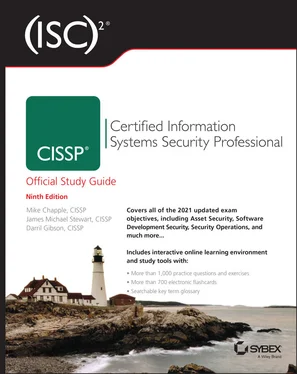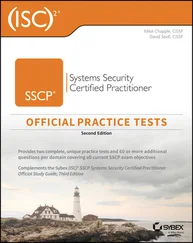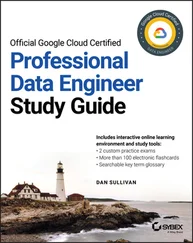An example is an attacker using a vishing attack while falsifying the caller ID as their doctor's office.
Trust as a social engineering principle involves an attacker working to develop a relationship with a victim. This may take seconds or months, but eventually the attacker attempts to use the value of the relationship (the victim's trust in the attacker) to convince the victim to reveal information or perform an action that violates company security.
An example is an attacker approaching you as you walk along the street, when they appear to pick up a $100 bill from the ground. The attacker says that since the two of you were close when the money was found, you two should split it. They ask if you have change to split the found money. Since the attacker had you hold the money while they went around to find the person who lost it, this might have built up trust in this stranger so that you are willing to take cash out of your wallet and give it to them. But you won't realize until later that the $100 was counterfeit and you've been robbed.
Urgency often dovetails with scarcity, because the need to act quickly increases as scarcity indicates a greater risk of missing out. Urgency is often used as a method to get a quick response from a target before they have time to carefully consider or refuse compliance.
An example is an attacker using an invoice scam through business email compromise (BEC) to convince you to pay an invoice immediately because either an essential business service is about to be cut off or the company will be reported to a collection agency.
Eliciting information is the activity of gathering or collecting information from systems or people. In the context of social engineering, it is used as a research method in order to craft a more effective pretext. A pretext is a false statement crafted to sound believable in order to convince you to act or respond in favor of the attacker. Any and all of the social engineering techniques covered in this chapter can be used both as a weapon to harm the target victim and as a means to obtain more information (or access). Thus, social engineering is a tool of both reconnaissance and attack. Data gathered via social engineering can be used to support a physical or logical/technical attack.
Any means or method by which a social engineer can gather information from the target is eliciting information. Any fact or truth or detail that can be collected, gathered, or gleaned from the target can be used to form a more complete and believable pretext or false story, which in turn may increase the chance of success of the next level or stage of an attack.
Consider that many cyberattacks are similar to actual warfare attacks. The more the attacker knows about the targeted enemy, the more effectively a plan of attack can be crafted.
Defending against eliciting information events generally involves the same precautions as those used against social engineering. Those include classifying information, controlling the movement of sensitive data, watching for attempted abuses, training personnel, and reporting any suspicious activity to the security team.
Prepending is the adding of a term, expression, or phrase to the beginning or header of some other communication. Often prepending is used in order to further refine or establish the pretext of a social engineering attack, such as spam, hoaxes, and phishing. An attacker can precede the subject of an attack message with RE: or FW: (which indicates “in regard to and forwarded,” respectively) to make the receiver think the communication is the continuance of a previous conversation rather than the first contact of an attack. Other often-used prepending terms are EXTERNAL, PRIVATE, and INTERNAL.
Prepending attacks can also be used to fool filters, such as spam filters, antimalware, firewalls, and intrusion detection systems (IDSs). This could be accomplished with SAFE, FILTERED, AUTHORIZED, VERIFIED, CONFIRMED, or APPROVED, among others. It might even be possible to interject alternate email header values, such as “X-Spam-Category: LEGIT” or “X-Spam-Condition: SAFE,” which could fool spam and abuse filters.
Phishing is a form of social engineering attack focused on stealing credentials or identity information from any potential target. It is derived from “fishing” for information. Phishing can be waged in numerous ways using a variety of communication media, including email and the web; in face-to-face interactions or over the phone; and even through more traditional communication mediums, such as the post office or couriered packages.
Attackers send phishing emails indiscriminately as spam, without knowing who will get them but in the hope that some users will respond. Phishing emails sometimes inform the user of a bogus problem and say that if the user doesn't take action, the company will lock the user's account. The From email address is often spoofed to look legitimate, but the Reply To email address is an account controlled by the attacker. Sophisticated attacks include a link to a bogus website that looks legitimate but that captures credentials and passes them to the attacker.
Sometimes the goal of phishing is to install malware on user systems. The message may include an infected file attachment or a link to a website that installs a malicious drive-by download without the user's knowledge.
 A drive-by download is a type of malware that installs itself without the user's knowledge when the user visits a website. Drive-by downloads take advantage of vulnerabilities in browsers or plug-ins.
A drive-by download is a type of malware that installs itself without the user's knowledge when the user visits a website. Drive-by downloads take advantage of vulnerabilities in browsers or plug-ins.
To defend against phishing attacks, end users should be trained to do the following:
Be suspicious of unexpected email messages, or email messages from unknown senders.
Never open unexpected email attachments.
Never share sensitive information via email.
Avoid clicking any link received via email, instant messaging, or a social network message.
If a message claims to be from a known source, such as a website commonly visited, the user should visit the supposed site by using a preestablished bookmark or by searching for the site by name. If, after accessing their account on the site, a duplicate message does not appear in the online messaging or alert system, the original message is likely an attack or a fake. Any such false communications should be reported to the targeted organization, and then the message should be deleted. If the attack relates to your organization or employer, it should be reported to the security team there as well.
Organizations should consider the consequences and increased risk that granting workers access to personal email and social networks through company systems pose. Some companies have elected to block access to personal internet communications while using company equipment or through company-controlled network connections. This reduces the risk to the organization even if an individual succumbs to a phishing attack on their own.
A phishing simulation is a tool used to evaluate the ability of employees to resist or fall for a phishing campaign. A security manager or penetration tester crafts a phishing attack so that any clicks by victims are redirected to a notification that the phishing message was a simulation and they may need to attend additional training to avoid falling for a real attack.
Читать дальше

 A drive-by download is a type of malware that installs itself without the user's knowledge when the user visits a website. Drive-by downloads take advantage of vulnerabilities in browsers or plug-ins.
A drive-by download is a type of malware that installs itself without the user's knowledge when the user visits a website. Drive-by downloads take advantage of vulnerabilities in browsers or plug-ins.










